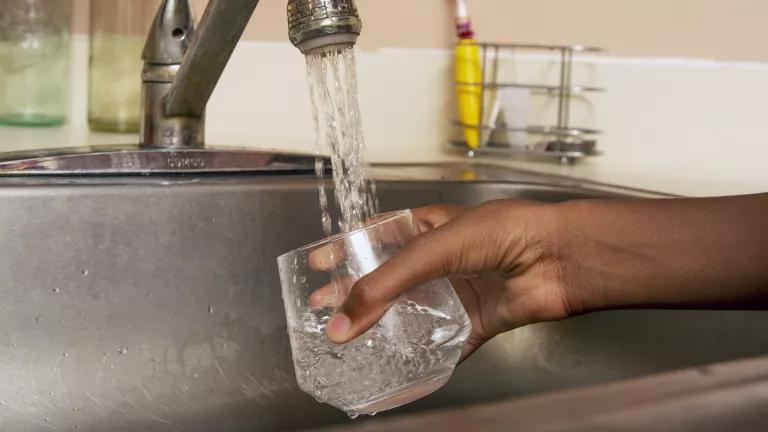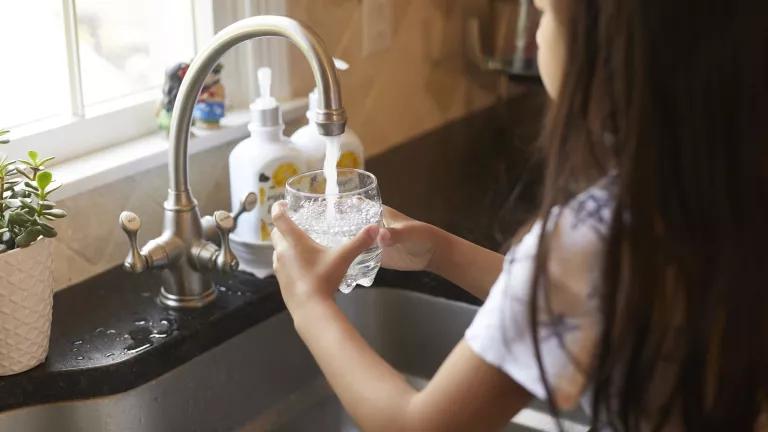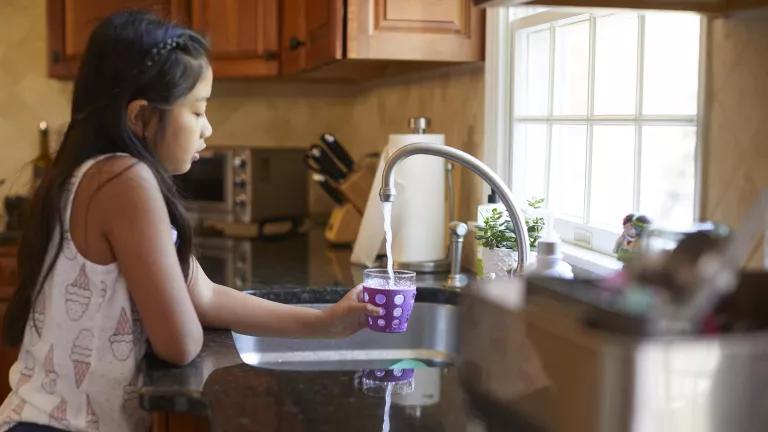Now Is the Time to Advocate for Safe Drinking Water
We stand on the brink of an opportunity for important change.

Chicago Teachers Union Vice President Jackson Potter
Angela Guyadeen/NRDC
For over 25 years, I have been dedicated to advocating for safe and accessible water—a fundamental and essential resource for all life. In this time, I have seen environmental progress at the local, state, and federal level. I’ve also seen incrementalism and frustrating inaction that clings to the status quo. Meaningful change is rare, requiring sustained action and commitment from individuals who care.
Currently, we stand on the brink of an opportunity for important change, particularly in addressing lead in drinking water.
Many communities, including Flint, Newark, Benton Harbor, and Pittsburgh, have suffered from poor water quality due to lead pipes. However, these communities share a common thread: their residents spoke out, demanded lead service line replacement, and achieved success. Amidst great challenges, these communities have proven that change is possible when voices unite.
With an estimated 9 million lead service lines still in use across the country, the time has come for a united effort to demand the replacement of all lead service lines in the U.S. The EPA recently proposed a rule to make this happen.
At its core, the proposed rule is a call to action: remove all lead pipes from the ground within the next 10 years. In reality, the proposal is far more complex, addressing health implications, costs, funding sources, and some modest outreach to schools. Regrettably, it includes time extensions for cities with the highest number of lead pipes – like Chicago, which could get 40 years or potentially longer to replace its pipes. Hundreds or even thousands of other communities with a high concentration of lead pipes also could be eligible for extensions. Moreover, the school and daycare protections are “woefully insufficient” as currently drafted.
While the rule isn’t flawless, it presents an important opportunity to right a wrong that the EPA has overlooked for decades. Indeed, of all the environmental challenges we face, this one is perhaps the most straightforward to address. Cities like Newark and Benton Harbor have shown us that swift and effective action is possible: Newark got its 23,000 lead pipes out of the ground in less than three years; Benton Harbor got its lead pipes out in less than 18 months.
EPA estimates that the total annual cost of removing lead service lines nationwide would be between $1.9 billion to $3.5 billion. (And their cost estimate would be lower if their economic analysis hadn’t used inflated “discount rates.”) Fortunately, the Bipartisan Infrastructure Law allocates a $15 billion down payment from the federal government, with 49% directed to disadvantaged communities as grants or principal forgiveness. There are also plenty of ways to ensure that the pipes get replaced without making water bills unaffordable for residents.
A recent study by researchers at the Harvard T.H. Chan School of Public Health highlights the significant health benefits of reducing lead exposure from drinking water, estimating at least $9 billion in annual health benefits. Based upon the Harvard study, NRDC has estimated that the health savings of removing lead pipes alone would total as much as a staggering $786 billion over the next 35 years. Even EPA estimates that the benefits of its proposed rule would be 4 to 12 times greater than the costs. This isn't just a safe drinking water rule; it's an investment in the health and well-being of our nation.
Public sentiment is also on our side, with polls indicating that access to safe drinking water is a top priority nationwide. A resounding nine out of ten respondents in a recent NRDC poll agree that the Lead and Copper rule should be updated. This support is even stronger in states where lead pipes are prevalent, such as Illinois, Missouri, and Wisconsin. Clearly, people value clean water and recognize its importance in daily life.
President Biden has expressed commitment to removing lead pipes within 10 years—an uncommon focus on water issues from a sitting president. It is crucial to hold the Biden administration accountable for this promise, especially with both the President and the public supporting the speedy removal of lead service lines.
So, what's next? The EPA is accepting public comments on the proposed rule until February 5. Subsequently, they will review these comments, consider changes to the rule, and should issue a final rule as soon as possible in 2024. Let's hope for a robust final rule that addresses the problem of lead pipes once and for all.
No community should endure what residents in Flint, Benton Harbor, Newark, and others have faced to secure safe drinking water. Experience shows that making our voices heard is the most effective way to bring about this change.
Please consider adding your name to the chorus calling for change by submitting comments HERE.




